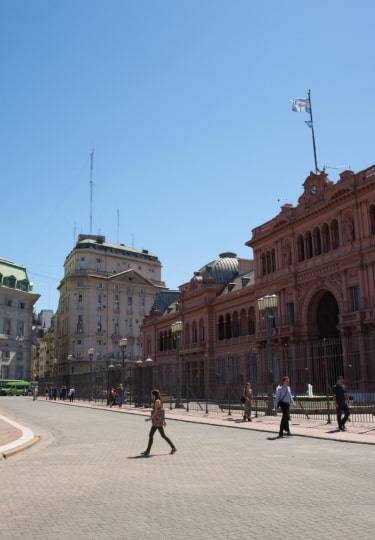The best time to visit Buenos Aires, Argentina is in the spring and summer, from November to February.
Located on the east coast of South America, on the vast River Plate, where the Uruguay and Paraná rivers merge, Buenos Aires enjoys a sub-tropical climate, which means hot summers and mild winters.
Spring is a time of glorious sunny days, clear skies, and outdoor living late into the night as locals enjoy the city’s many bars and restaurants.
Summer is hot and sultry, with occasional storms, but if you’re combining a stay in the capital with a visit further south, to Patagonia and even Antarctica, December, January, and February are the best months for taking in both the north and the south of this 2,360-mile-long country.
Visiting Buenos Aires By Season
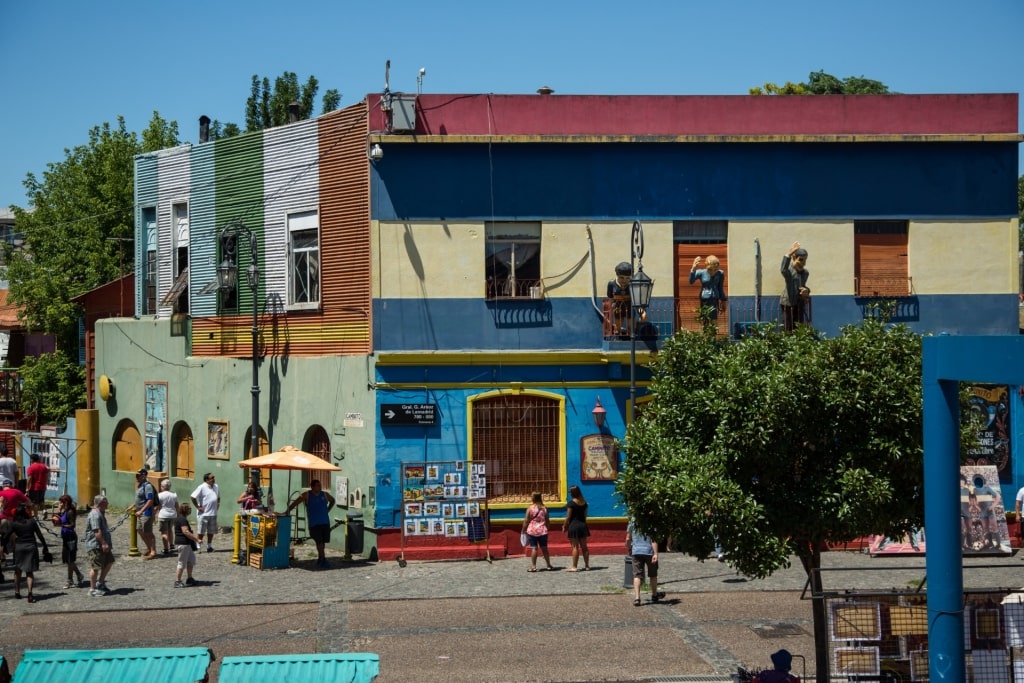
Caminito
Winter
The Northern Hemisphere’s summer, June, July, and August, is the heart of winter in Buenos Aires. The skies can be overcast during these months and temperatures drop to an average of 52.3°F (11.3°C). Buenos Aires can, however, have wonderfully cool, brisk winter days with clear blue skies, especially in June, which are ideal for exploring the plazas and parks of the city.
Read: Interesting Neighborhoods in Buenos Aires to Explore
Spring
September, October, and November, fall for North Americans, is spring in Argentina. November in particular is a wonderful time to visit, as the beautiful city is swathed in the purply-blue of jacaranda blossom. Expect average daily highs of 69.8°F (21°C) in November, the perfect temperature for sightseeing.
Summer
Winter, if you live in the Northern Hemisphere, is summer in Argentina. December to February is the best time to go to Buenos Aires for warmth. There’s tango in the streets, the parks are in full bloom, and the bars and restaurants along the River Plate are buzzing late into the night.
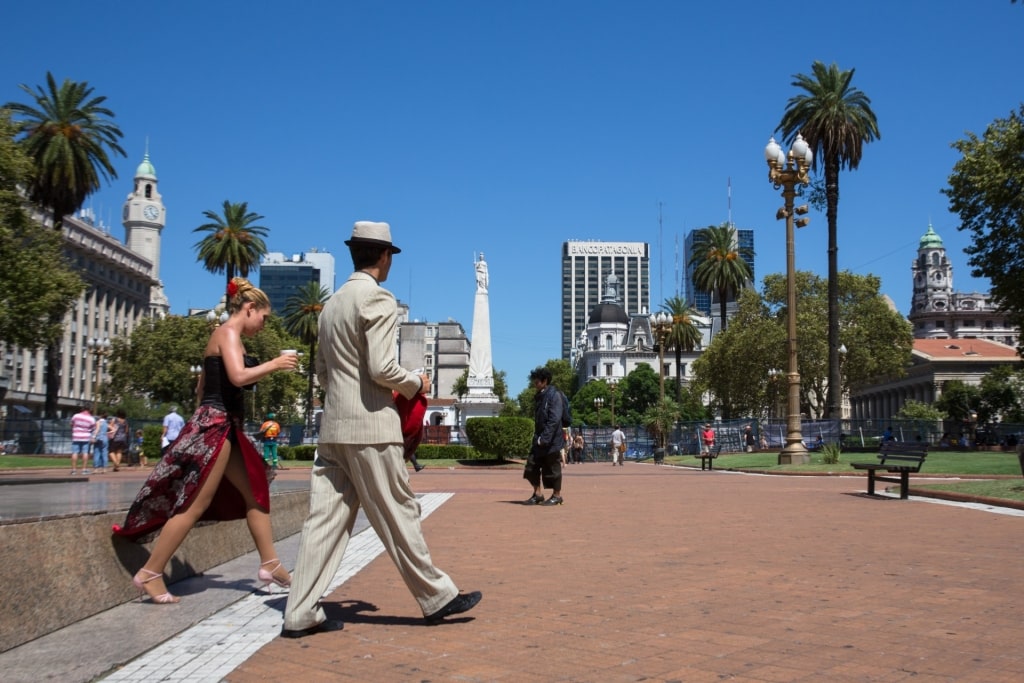
Plaza de Mayo
Expect average temperatures of 77°F (25°C) in January, the hottest month, although bear in mind that this is the average and highs of 86°F (30°C) are quite common.
January can be humid and as the first week of the year is still the Christmas and New Year holiday period, a lot of Porteños, as the locals are known, head to the beach to escape the city. In February, the whole city goes wild for Carnaval, a time of parties, processions, and live music.
Fall
March, April, and May are when Buenos Aires transitions from summer into fall. March is the beginning of fall, and the heat of the summer lessens. Expect average daily highs of 72.3°F (22.4°C) around this time, dropping to 59.7°F (15.4°C) in May. Compared to the summer months, there’s only moderate rainfall, so March is still a good time to visit Buenos Aires.
When Is Rainy Season?
Although November to March is the hottest period in Buenos Aires, it’s also the wettest. November is one of the rainiest months, receiving an average of 4.7 inches (120mm), increasing to 4.9 inches (125mm) in February. This tends to fall as short, sharp storms as the humidity increases.
In contrast, the winter months receive less rain; just 2.4 inches (60mm) in both June and July.
When Is High Season?
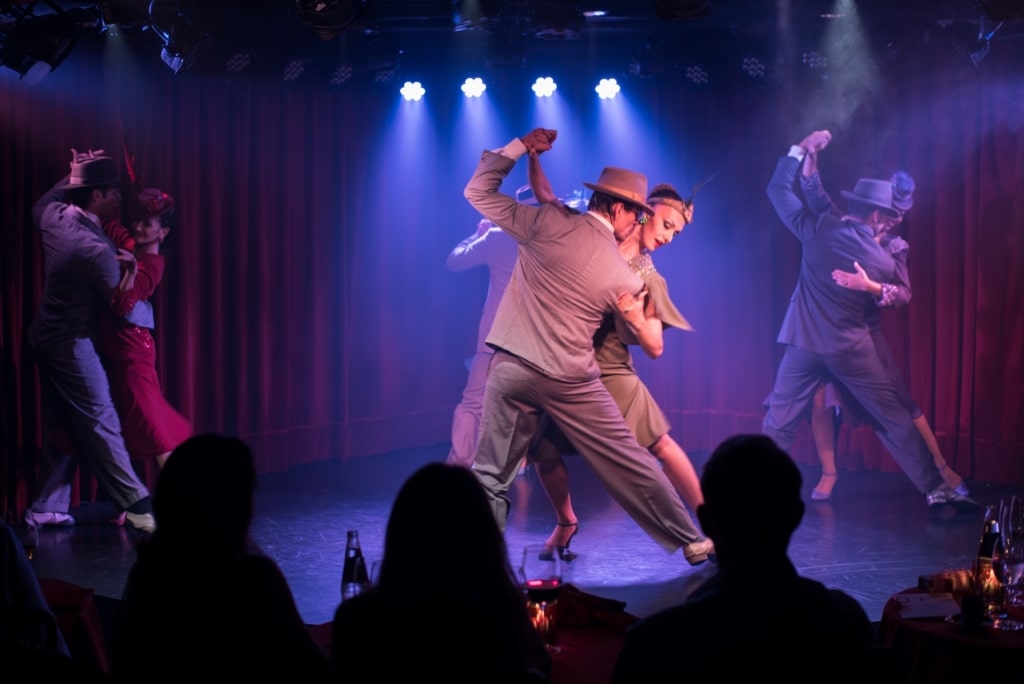
Tango show
High season is December to February, when the weather is at its hottest. But as a thriving, cosmopolitan city, Buenos Aires enjoys other peaks in visitor numbers. August, for example, brings the Tango Dance Festival and World Cup, a big city-wide event on the cultural calendar.
Read: Argentina Culture Guide
When Is Shoulder Season?
November is technically shoulder season, but it’s arguably the best month to go to Buenos Aires. The temperature is more manageable and the city looks its best thanks to the jacaranda blossom. There will probably be rain, but in the form of short downpours that clear the air.
March is also shoulder season, as summer moves into fall, but can bask in highs of 81°F (27°C).
When Is Low Season?
Low season in Buenos Aires is the winter months, July and August. The weather is cool and often rainy. This is a time when Porteños head south to the ski resorts, or north to warmer weather.
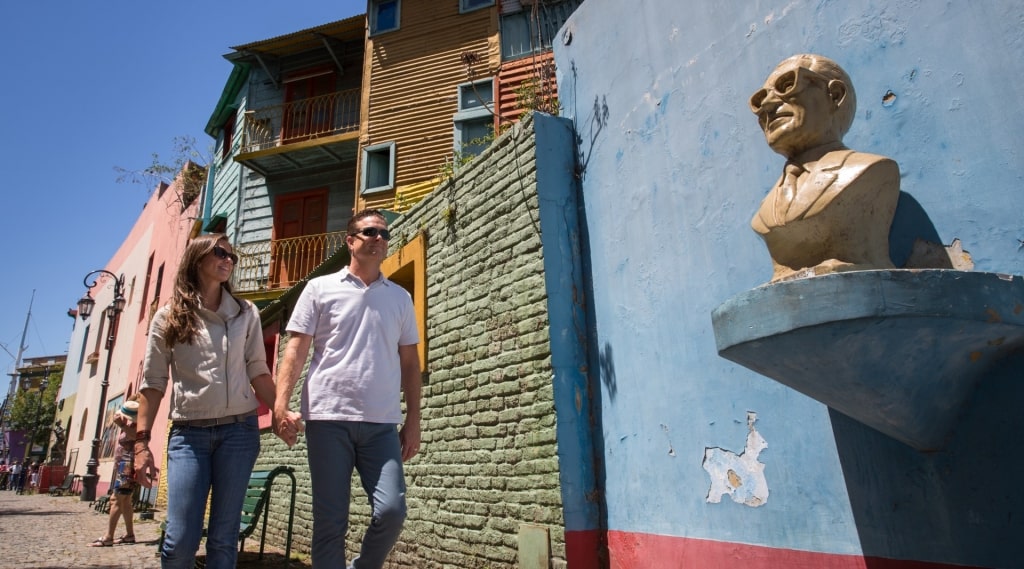
Caminito
Discover the sultry and sophisticated Argentine capital for yourself. Browse our Buenos Aires cruises and plan your South American adventure.
